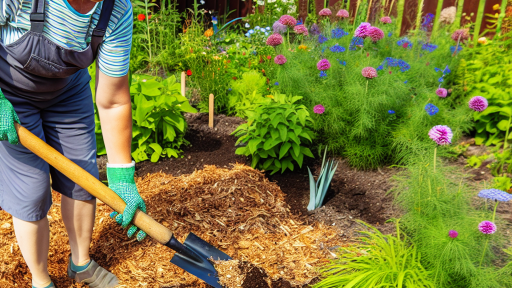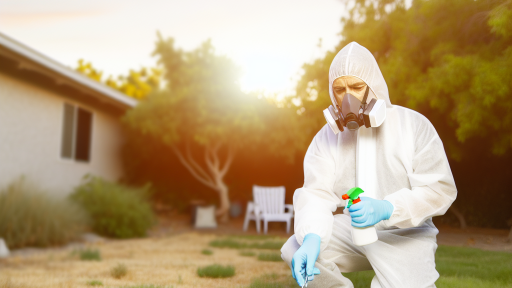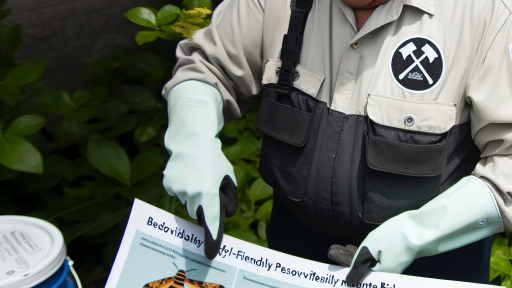Understanding the Principles of Integrated Pest Management (IPM)
Definition of Integrated Pest Management
Integrated Pest Management is a holistic approach to pest control.
It combines various management strategies to minimize pest damage.
This approach promotes sustainable farming practices.
Key Components of IPM
IPM incorporates several key components for effective management.
First, monitoring pest populations is crucial for informed decision-making.
Regular scouting helps identify pest levels and types.
Next, understanding pest biology and ecology aids in developing strategies.
This knowledge allows farmers to anticipate pest outbreaks.
Prevention Strategies in IPM
Prevention strategies are essential in IPM practices.
Preventing pest infestations can reduce the need for chemical interventions.
Crop rotation is one effective method to disrupt pest life cycles.
Also, selecting resistant plant varieties can enhance resilience.
Finally, encouraging beneficial insects supports natural pest control.
Control Methods in IPM
IPM employs a variety of control methods tailored to specific situations.
Cultural controls include practices like sanitation and proper irrigation.
Transform Your Agribusiness
Unlock your farm's potential with expert advice tailored to your needs. Get actionable steps that drive real results.
Get StartedMechanical controls can involve traps or barriers to block pests.
Biological controls utilize natural predators to manage pest populations.
Chemical controls should be used as a last resort in IPM.
Benefits of Implementing IPM
Implementing IPM yields several important benefits for farmers.
It reduces reliance on chemical pesticides, promoting environmental health.
Furthermore, IPM can lower production costs through effective pest management.
It also enhances agricultural sustainability over the long term.
Finally, IPM improves crop quality and yields through targeted interventions.
Assessing Pest Populations and Identifying Beneficial Organisms
Understanding Pest Populations
Farmers play a critical role in monitoring pest populations.
Regular assessments help identify pest threats early.
Utilizing traps and field surveys yields valuable data.
Additionally, farmers can track seasonal patterns of pests.
Identifying Pest Species
Correctly identifying pest species is essential for management.
Farmers can use field guides and online resources for identification.
Moreover, consulting local agricultural extensions offers expert help.
Documenting sightings creates a reference for future assessments.
Recognizing Beneficial Organisms
Beneficial organisms contribute significantly to pest control.
Predators and parasitoids help keep pest populations in check.
Farmers should learn to identify these helpful species.
Common examples include ladybugs and lacewings.
Monitoring Techniques
Effective monitoring is key to integrated pest management.
Farmers can implement sampling methods regularly.
Visual inspections and sweep nets are practical tools.
Using pheromone traps can attract specific pests for observation.
Showcase Your Farming Business
Publish your professional farming services profile on our blog for a one-time fee of $200 and reach a dedicated audience of farmers and agribusiness owners.
Publish Your ProfileData Analysis and Decision Making
Analyzing collected data informs pest management strategies.
Farmers can determine the economic threshold for action.
This threshold is the pest population level where control becomes necessary.
Thus, timely decisions prevent unnecessary pesticide applications.
Creating a Monitoring and Action Threshold Plan
Importance of Monitoring
Monitoring pest populations is crucial for effective pest management.
This process allows farmers to identify pest presence in a timely manner.
Moreover, it helps in assessing the need for intervention.
Regular monitoring can prevent pest outbreaks before they escalate.
Establishing Action Thresholds
Action thresholds define the pest density at which control measures become necessary.
Without these thresholds, farmers may either underreact or overreact to pests.
Consequently, economic and environmental resources could be wasted.
Thus, determining these levels is essential for sustainable practices.
Methods of Monitoring
Diverse methods can be applied to monitor pest populations effectively.
- Field scouting involves regular inspections of crops.
- Sticky traps can capture pest species for identification.
- Differential counts assess the severity of an infestation.
Setting Threshold Levels
Threshold levels must align with crop value and pest potential damage.
For example, a higher threshold may be acceptable for lower-value crops.
In comparison, high-value crops require stricter thresholds.
Farmers must consider economic factors when setting these levels.
Creating a Monitoring Schedule
A well-structured monitoring schedule aids in consistent pest evaluation.
Farmers should incorporate seasonal variations in pest activity into their timelines.
Weekly checks during peak seasons can enhance detection rates.
Additionally, referring to local extension services can provide valuable insights.
Documentation and Record-Keeping
Maintaining records of pest populations and control actions is vital.
This documentation helps in refining future monitoring plans.
Successful tracking promotes evidence-based decision-making.
Furthermore, it aids in compliance with regulatory requirements.
See Related Content: Sustainable Livestock Water Management Techniques
Cultivation Practices that Enhance Pest Management
Crop Rotation and Diversification
Crop rotation disrupts pest life cycles effectively.
It allows different crops to replenish soil nutrients.
Diversifying crops reduces the risk of pest outbreaks.
For instance, planting legumes increases nitrogen in the soil.
Moreover, diverse plant species attract beneficial organisms.
Cover Cropping
Cover crops improve soil health and enhance pest control.
They provide habitat for natural predators of pests.
Species like clover and vetch prevent soil erosion.
Consequently, they suppress weed growth as well.
Organic Mulching
Organic mulch regulates soil temperature and moisture.
It reduces weed proliferation, limiting pest hiding places.
Furthermore, mulch breaks down and enriches the soil.
Using materials like straw or wood chips is effective.
Integrated Biological Control
Integrating biological control utilizes natural predators.
Showcase Your Farming Business
Publish your professional farming services profile on our blog for a one-time fee of $200 and reach a dedicated audience of farmers and agribusiness owners.
Publish Your ProfileFor instance, ladybugs control aphid populations actively.
Releasing beneficial nematodes decreases soil-borne pests.
These methods minimize reliance on chemical pesticides.
Environmental Monitoring
Regular monitoring helps detect pest infestations early.
Farmers can use traps and visual inspections effectively.
Data collection on pest populations informs management strategies.
This proactive approach reduces crop damage significantly.
Precision Agriculture
Utilizing technology enhances pest management practices.
Precision agriculture applies targeted treatments efficiently.
Drones and sensors aid in monitoring crop health.
Consequently, farmers can apply products only where needed.
Educating Farm Workers
Training workers on pest management fosters success.
Workers can identify pests and implement control measures.
Annual workshops can update them on best practices.
Awareness encourages timely responses to outbreaks.
Uncover the Details: Waste-to-Energy Options for Modern Farms
Implementing Biological Control Methods
Introduction to Biological Control
Biological control involves using natural enemies to manage pests.
This method reduces reliance on synthetic chemicals.
It promotes ecological balance within agricultural systems.
Types of Natural Enemies
Natural enemies include predators, parasites, and pathogens.
Each plays a unique role in controlling pest populations.
Understanding these roles is crucial for effective implementation.
Predators
Predators are organisms that hunt and kill their prey.
Ladybugs are a prime example of beneficial predators.
They effectively control aphid populations on crops.
Other predators include lacewings and certain beetles.
Farmers should encourage their presence in fields.
Parasites
Parasites depend on a host for their survival.
They can weaken or kill pest species over time.
Parasitic wasps attack caterpillars and aphids effectively.
Also, nematodes can target soil-dwelling pests.
Integrating parasites into pest management strategies is beneficial.
Benefits of Biological Control
Biological control supports sustainable farming practices.
It helps maintain biodiversity in agricultural ecosystems.
Additionally, it reduces chemical residues in food products.
This approach enhances the resilience of farming systems.
Challenges in Implementation
Implementing biological control can present challenges.
Farmers may face difficulties in adoption and management.
It requires understanding ecological interactions within the farm.
Furthermore, the timing and release of natural enemies matter.
Showcase Your Farming Business
Publish your professional farming services profile on our blog for a one-time fee of $200 and reach a dedicated audience of farmers and agribusiness owners.
Publish Your ProfileEducation and Training
Education is vital for successful implementation.
Farmers need training on identifying and using natural enemies.
Workshops and online resources can provide necessary guidance.
You Might Also Like: Crop Rotation Strategies for Biodiversity

Utilizing Cultural Practices to Prevent Pest Outbreaks
Importance of Cultural Practices
Cultural practices play a significant role in pest management.
They help in maintaining ecological balance on farms.
For example, crop rotation can disrupt pest life cycles.
This method reduces reliance on chemical pesticides.
Crop Rotation Techniques
Crop rotation involves alternating different crops in a specific sequence.
This practice assists in breaking the pest and disease cycle.
Farmers can plan rotations based on family groups of plants.
Legumes can restore nitrogen in the soil for subsequent crops.
Furthermore, different root systems can enhance soil structure.
Intercropping Strategies
Intercropping involves growing two or more crops together.
This method can confuse pests and reduce infestations.
Certain plants can repel pests, while others attract beneficial insects.
For instance, planting marigolds can keep nematodes away.
Overall, diversity in crops leads to healthier ecosystems.
Proper Timing of Planting
Timing is crucial when planting crops to outsmart pests.
Staggered planting helps in avoiding peak pest populations.
Early planting can sometimes lead to lower pest pressure.
Farmers should monitor local pest forecasts and adjust accordingly.
This proactive approach minimizes potential infestations.
Soy Health Management
Healthy soil supports robust crop growth and pest resilience.
Practices like cover cropping improve soil structure and fertility.
Healthy soils foster beneficial organisms that outcompete pests.
Additionally, proper irrigation and drainage reduce pest habitats.
Continuous soil health assessments enhance pest management efforts.
Maintaining Crop Diversity
Diverse cropping systems benefit pest control efforts.
Planting a variety of species can attract natural predators.
These predators can manage pest populations effectively.
A monoculture scenario often leads to increased vulnerabilities.
Thus, diversity fosters resilience against pest outbreaks.
Gain More Insights: Building a Zero-Waste Farm: Strategies and Tips
Selecting and Utilizing Chemical Controls Responsibly
Understanding the Role of Chemical Controls
Chemical controls are valuable tools in pest management.
They help manage pests that threaten crop yields.
However, responsible use is essential to sustainability.
Identifying When to Use Chemical Controls
Farmers should assess pest populations before acting.
Threshold levels indicate when chemical action is necessary.
Monitoring pest and beneficial insect populations is important.
Showcase Your Farming Business
Publish your professional farming services profile on our blog for a one-time fee of $200 and reach a dedicated audience of farmers and agribusiness owners.
Publish Your ProfileUtilizing traps can help gauge pest densities effectively.
Choosing the Right Chemicals
Select products that target specific pests effectively.
Research the environmental impact of each chemical.
Include options that are safe for beneficial insects.
Consult local agricultural extension services for recommendations.
Implementing Best Practices
Follow label instructions closely to ensure safe application.
Apply chemicals during times when beneficial insects are less active.
Consider using spot treatments instead of blanket sprays.
Rotate chemicals to prevent pest resistance development.
Integrating Chemical and Non-Chemical Strategies
Combine chemical controls with cultural practices for effectiveness.
Encourage natural predators through habitat management.
Employ mechanical controls alongside chemical options.
This integrated approach enhances pest management success.
Evaluating the Effectiveness of Chemical Controls
Monitor crop health post-application to assess effectiveness.
Document pest activity and the impact of treatments.
Adjust strategies based on collected data and results.
This ongoing evaluation informs future pest management decisions.
The Role of Education and Farmer Training in IPM Success
Understanding Integrated Pest Management
Integrated Pest Management (IPM) is a holistic approach to pest control.
This method emphasizes the use of various strategies for managing pests.
Education and training are essential for implementing IPM effectively.
Importance of Education in IPM
Education empowers farmers to make informed decisions about pest management.
It creates awareness about pest biology and ecology.
Farmers learn to identify pests accurately through educational programs.
Furthermore, understanding natural pest regulation enhances their practices.
Training Programs for Farmers
Hands-on training equips farmers with practical skills.
Workshops often include demonstrations on various pest control methods.
Farmers gain experience with tools and techniques that support IPM.
Local agricultural extension services frequently provide these training opportunities.
Building a Community of Knowledge
Networking among farmers fosters a community of knowledge sharing.
Farmers can exchange success stories and challenges faced.
This collegial environment enhances collective learning and innovation.
Community workshops can also link farmers with experts and researchers.
Utilizing Technology for Education
Technology plays a vital role in modern farmer education.
Online resources provide access to a wealth of information on IPM.
Webinars and interactive platforms facilitate remote learning opportunities.
Mobile apps can assist in pest identification and management techniques.
Evaluating the Effectiveness of Training
Regular assessments of training programs ensure their effectiveness.
Feedback from participants helps to refine and improve curriculum.
Evaluations can measure knowledge gained and changes in practices.
Sustained support is crucial for long-term success in IPM adoption.
Showcase Your Farming Business
Publish your professional farming services profile on our blog for a one-time fee of $200 and reach a dedicated audience of farmers and agribusiness owners.
Publish Your ProfileAdditional Resources
Integrated pest management: good intentions, hard realities. A …
Integrated farm management for sustainable agriculture: Lessons for …




